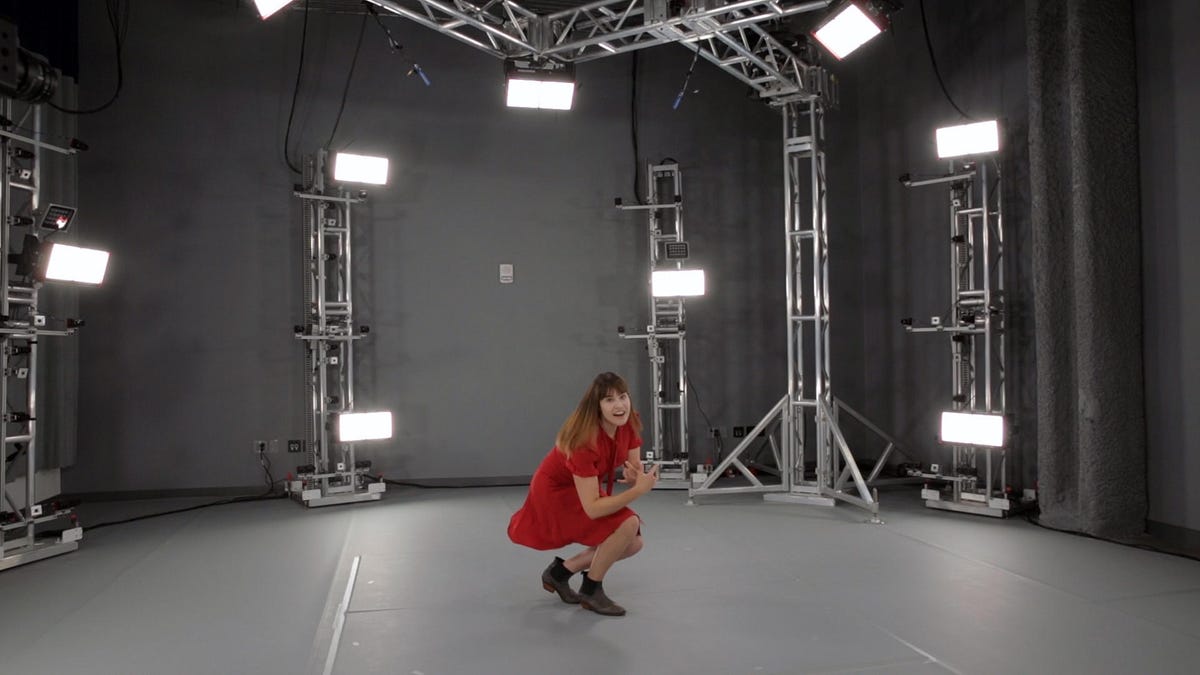This is how Microsoft makes holograms
Step inside Microsoft’s mixed-reality capture studio to see how it’s done.

Capturing a hologram is a lot easier than I expected.
I'm standing inside Microsoft's mixed-reality capture studio in San Francisco when a director shouts, "Action!" All of a sudden, I'm busting out bad dance moves in the middle of an 8-foot circle for about 10 seconds. And that's it. With a little computational magic, I'm now immortalized as a hologram.
There are 106 cameras surrounding me from all angles, and four microphones aimed down to capture audio. The cameras are split evenly between infrared and RGB units that capture texture, color and shape at 30 to 60 frames per second.
"We take the images that are about 10GB/second and run a bunch of computer vision algorithms and a bunch of geometric meshing algorithms to crunch it down to a final product," said Steve Sullivan, general manager, Microsoft mixed reality capture studio.
During post-production, the mesh can be manipulated to change lighting or colors on the 3D model. The final product is a volumetric 3D model, or hologram, compressed to a more manageable 10Mbps for playback.
When watching the model in 2D (such as viewing on a desktop), the viewer can change the point-of-view during the performance using a mouse or touchscreen.
"We really want it to be experienced everywhere just like you'd experience a photo or a movie," Sullivan said.
In a headset such as Microsoft's HoloLens , the hologram is in your space so you can move around the performance. Multiple people can view the hologram at the same time, but have the correct perspective depending on their position.
There are currently three capture studios: one in San Francisco, one at Microsoft's Redmond campus in Washington, and one in London.
Unfortunately, you can't just step inside one of these capture studios to make a hologram for yourself. Microsoft is catering to groups such as celebrities, advertisers and organizations focused on education such as hospitals that could potentially use holograms of patients to help train doctors. Microsoft did not disclose how much a capture session will cost.
Rebooting the Reef: CNET dives deep into how tech can help save Australia's Great Barrier Reef.
The Smartest Stuff: Innovators are thinking up new ways to make you, and the things around you, smarter.

